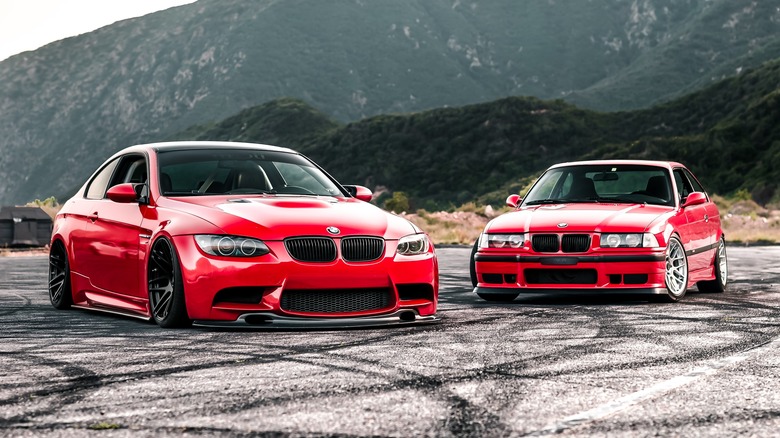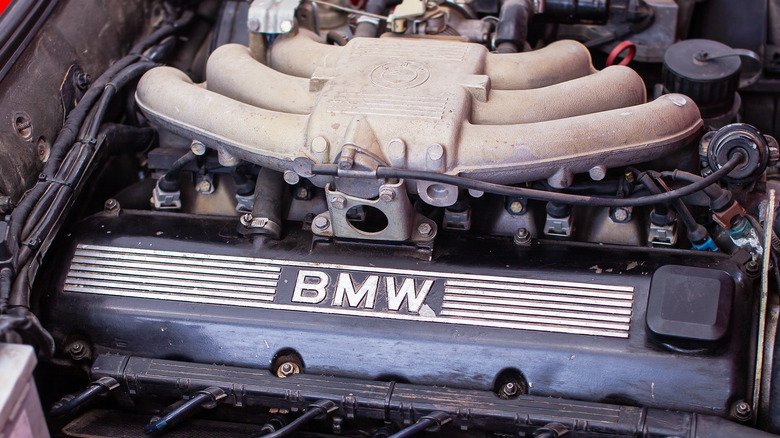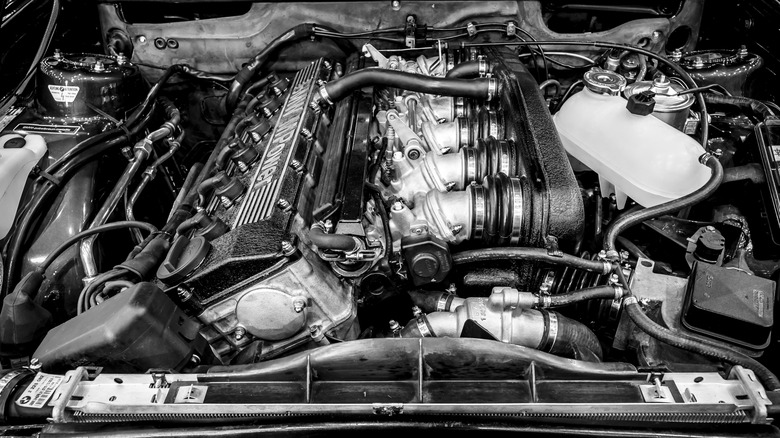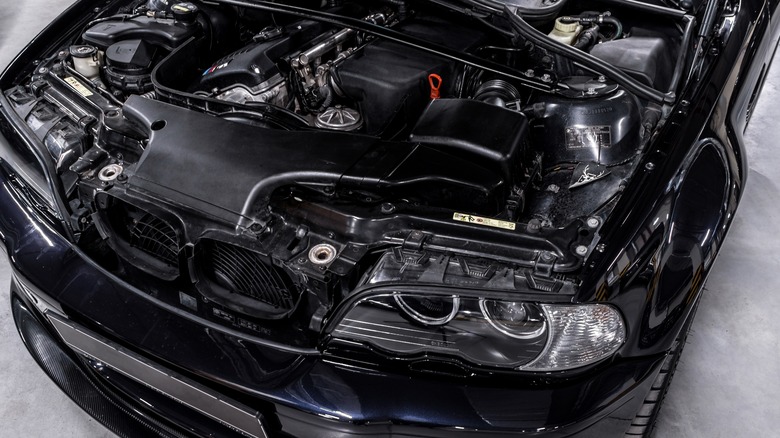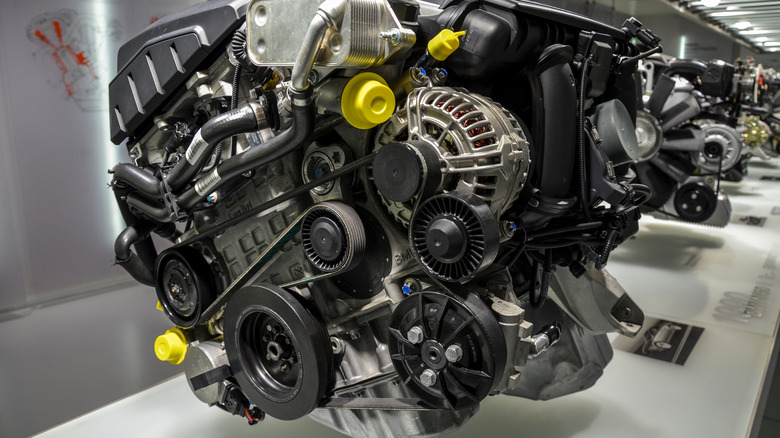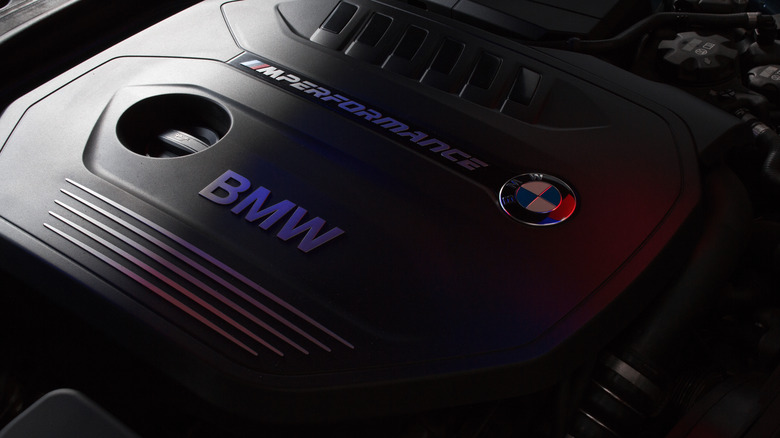The 5 Most Reliable Engines BMW Has Ever Built
BMW has a long-established reputation for making dependable, durable vehicles. Last year's Consumer Reports owner satisfaction survey placed BMW third among all manufacturers for the model years 2000-2022 in terms of reliability. Part of the reason BMW has been able to build and keep such a faithful following among its drivers has been the steadily evolving lineup of powerful and trustworthy engines the Munich-based automaker has been producing since the 1970s.
BMW began as a manufacturer of aircraft engines more than a century ago before expanding to include automobiles and motorcycles in the 1920s. BMW's first straight-6 motor hit the roads in 1933 under the hood of their Model 303 Cabriolet.
After World War II, German factory shutdowns prevented BMW from making any more cars until 1952. But by the mid-'70s, it was full steam ahead for BMW automotive engineers, and the 3 Series was introduced to the world in 1975. For its first three years, the E21 series got a 4-cylinder 2.0-liter engine, but in 1978, BMW debuted the first in a series of hard-working inline 6-cylinder powerplants. Let's look at five stalwart motors that have powered BMWs for decades and millions of miles of driving on highways worldwide.
M20
The M20 was a naturally aspirated I-6 motor that powered the E30 series of BMWs from the late '70s through the early '90s. It featured an iron block and aluminum head and came in various displacements from 2.0 to 2.7 liters over its lifespan. The standard valve timing system made the M20 a breeze to maintain and gave it an added degree of dependability. It's common to find M20-powered E30 models that have run past the 200,000-mile mark.
The SOHC design was simple enough for many shade tree mechanics to keep running on their own, which is why so many E30s are still in the clutches of their loyal owners and are getting harder and harder to come by with each passing year. But if you can get your hands on an M20-powered BMW, you will have a car that is easy to maintain, fun to drive, and will hold its value in the years ahead.
M50
When the E30 series gave way to the E36, so did the M20 engine to the M50. With the new motor came with the introduction of BMW's variable valve timing VANOS system, which added efficiency and complexity to the powerplant. The M50 had a coil-on-plug ignition system and lightweight plastic intake manifold, and the electronic fuel injection system provided a redline of 6500 rpm. The M50 put out its maximum of 189 horsepower at 6000 rpm and 180.6 ft-lb of torque at 4,700 rpm.
BMW produced several different variations of the M50 with displacements that ranged from 2.0 to 2.5 liters. The DOHC motors had four valves per cylinder, an iron block, and an aluminum head. Along with the 1991 and 1992 model year E36 3 Series, BMW put the M50 in their E34 5 Series sedans and wagons between 1990 and 1992.
M54
BMW introduced the M54 in 2000, placing it in a wide range of models from the X3 and X5 to the E46 3 Series, the E85 Z4, and the E65 7 Series between 2000 and 2006.
The M54's aluminum block and cylinder head were given cast iron liners for additional strength, and a special "ZHP" version was sold in North America with upgraded camshafts and software tweaks that boosted output to 235 hp and 222 lb-ft while also upping the redline to 6,800 RPM.
The M54 — with its dual VANOS system and variable-length DISA air intake valve — was more complex than most of its inline-6 predecessors and came with an electronically controlled throttle and thermostat. With all of its technical advances, the M54 delivered 228 horsepower and 221 ft-lb of torque yet still carried enough of a reputation for reliability to earn it a spot on Ward's best engine list for three consecutive years between 2001 and 2003.
After that, the M54 was phased out in favor of the next engine on our list.
N52
BMW introduced the N52 in 2004 and used 2.5 and 3.0 versions in various models until 2015 when it transitioned to turbocharged engines for its entire lineup. The last of BMW's naturally aspirated inline six-cylinder motors incorporated many of the features of the M54, including an electronic throttle and double VANOS systems. There were changes made to the fluid delivery systems, however, as the N52 marked BMW's move from a mechanical to an electric water pump and the introduction of a variable output oil pump.
The engine composition was also changed to an aluminum core with a magnesium shell to save weight.
The result was a power range of 174 hp to 215 hp and peak torque between 170 and 184 lb-ft, depending on the model for the 2.5L version, which was produced between 2005 and 2011. For the 3.0L version, which was in production from 2006 until 2015, power output ranged from 215 to 268 hp and torque from 199 to 232 lb-ft.
B58
BMW's current inline 6-cylinder offering, the B58, might be its most dependable and technologically advanced motor yet. The B58 debuted in 2015 and appears widely across the BMW model lineup as well as the Toyota GR Supra and the Morgan Plus Six. The B58 is remarkably heat-efficient and inherits BMW's VANOS valve timing and Valvetronic valve lift systems from its predecessors. The various iterations of the B58 put out as much as 355 hp and 369 lb-ft of torque, making the 3-liter turbocharged beast the most powerful engine on this list by a wide margin.
For drivers hungry for even more performance, BMW produced a high-output version of the B58, dubbed the S58, beginning in 2019. The S58 added a second turbocharger and a secondary electric pump to help cool the turbos once the engine was turned off. The S58 also features a specially constructed crankshaft made from chrome-moly steel that connects to forged pistons manufactured by MAHLE Motorsport. The S58 puts out 473 or 503 hp depending on the tuning and can be found in an assortment of M series and Alpina B3 models.
